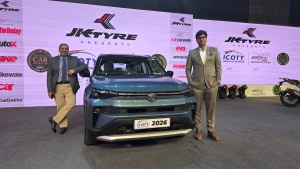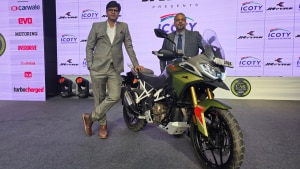Travelogue: Exploring the North East in the Hyundai Tucson
There's something about experiences that make you who and what you are, isn't it? Until and unless you don't experience something first-hand, all you have is just a picture formed in your head. Reading about the North East in books, newspapers and other forms of digital mass media, I had formed a notion about this part of the country. So when Bert asked me to participate in Hyundai's second season of the Great India Drive with the all-new Tucson, I didn't even bat an eyelid before agreeing to it. Who in their right mind would decline the opportunity to drive across the seven north-eastern states - Meghalaya, Tripura, Mizoram, Manipur, Nagaland, Assam and Arunachal Pradesh.

While the first edition of the Great India Drive, in the Hyundai Creta, was a Team OD-only affair, this time around we thought of taking a contestant along with us for the drive. After a simple lucky draw, Binil Varghese from Bengaluru was the one to accompany us. At first he was a bit sceptical about the call he received informing him about the win. "I thought it's a prank by one of my friends," he said. However, an email confirmation later he was all set, of course after getting the required permission from his employer and newly wedded wife!
The plan was to begin from Siliguri, West Bengal, on April 3. But as is the case with most plans, they never really turn out as thought. There was a delay due to unforeseeable circumstances which put us a day behind schedule, and I was worried that we may not have enough time to cover all states. Nevertheless, after plonking our luggage into the cavernous boot of the Tucson, we finally began our journey. Since the drive to Shillong would take us over 12 hours, we decided to stop for the night in Guwahati, Assam.
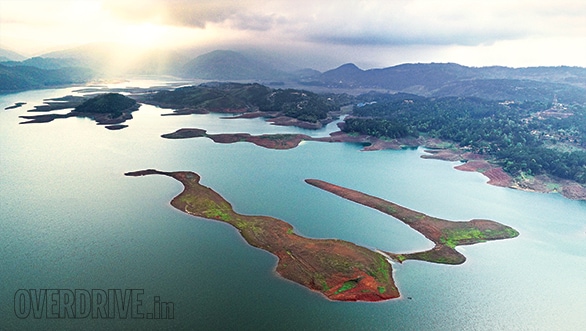 The Umiam Lake stretches out as far as the eyes can see
The Umiam Lake stretches out as far as the eyes can see
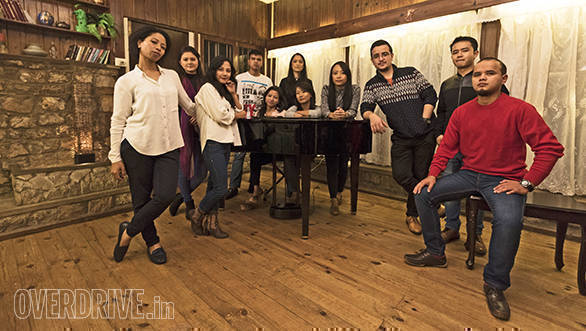 The ultra-talented and multi-award winning Shillong Chamber Choir treated us to a live performance, in their home, right where they practise their soulful songs
The ultra-talented and multi-award winning Shillong Chamber Choir treated us to a live performance, in their home, right where they practise their soulful songs
The entire region was lashed with heavy rains a few days prior, and the effects were visible in the poor conditions of the roads, just outside Siliguri. I was a bit wary of slicing open the Nexen tyres, or worse damaging the rims over the deep craters. Thankfully, the Tucson was unaffected and we managed to get to our hotel, well past midnight.
The next day we got on loop of NH6 in Meghalaya and were instantly relieved to see the excellent condition of the roads. I could finally unleash the power of 2-litre 185PS, CRDi engine, and the slightly stiff suspension set-up was perfect for cornering around the many hairpin bends and chicanes on the way up to Shillong.
On the way we stopped to soak in the beauty of the Umiam Lake. This lake was created by damming the Umiam River in the 1960s and its catchment area is spread across 220 sq.km. The water is mainly used to generate electricity and for fishing. After a quick round of photos, we arrived in Shillong close to sunset.

 Shillong truly is the Scotland of the East
Shillong truly is the Scotland of the East
 The roads in and around Shillong are some of the best we've experienced
The roads in and around Shillong are some of the best we've experienced
Driving into the town, it was quite interesting to see how well behaved and organised the traffic was, in stark contrast to the utter lack of traffic sense among many big city dwellers.
After checking into our hotel, Bobby, the local guide, took us to Dylan's Cafe to feast on some delicious continental food. As the name suggests, the cafe pays tribute to the legendary singer Bob Dylan. Multiple paintings of the singer and lyrics from his chartbusters adorn the walls of the cafe, which also happens to be Shillong's first and only tribute cafe. It is quite a popular hang-out among the locals, which is also an indication of Shillong's love for music.
That's also probably why the town is the home base for the extremely talented and multi-award winning music group the Shillong Chamber Choir. Founded in 2001 by Neil Nongkynrih, the choir has won millions of hearts for their soulful renditions and medleys of popular songs. They've also collaborated with bigwigs of the music and film industry. We were honoured to spend an evening with them at their residence in Whispering Pines, where we were treated to an incredible live performance.
Besides music, we also spoke about cars and bikes, where the choir members - William, Ryan, Jessica, Dona and Rishila - had quite an interesting take on their favourite cars and bikes.
 An aerial view of the landslide that caused a huge traffic jam in the Narpuh Reserve Forest
An aerial view of the landslide that caused a huge traffic jam in the Narpuh Reserve Forest

A few hours prior to meeting the choir, we spent the day in the wettest place on earth, Cherrapunjee. Situated about 50-odd kilometres from Shillong, the valleys in and around Cherrapunjee are covered in lush and very diverse vegetation. On our agenda was the living root bridges, one of oldest of its kind in the world. There are two bridges in this region - the longest is in the Nongthymmai village and the double-decker bridge in the Nongriat village.
At first glance, these bridges look mystical and you instantly wonder how these bridges were formed. The process, our guide Phil said, is a long drawn and it begins by planting the seeds of the Indian rubber tree at both ends of the stream. The trees grow up to 100 years after which they give out aerial roots. To help guide these roots to the other end, the villagers tie a metal string and the bark of a betel nut tree from one end to the other. These roots intertwine along this manmade guide path and grow to the other end. The bridge is walkable only after 30-35 years, so in all it takes about 135 years for the bridge to form. "I can't believe how strong this bridge actually is. I can walk so easily," said Binil after walking across for the umpteenth time.
The next day we set off towards the second state on our list, Tripura. The plan was to reach our hotel by midnight, but remember what I said about plans, right? Driving through the Narpuh Reserve Forest, which borders Tripura and Meghalaya, we came upon a long line of trucks, parked by the side of the road. Our fears that the reason for the jam could be a landslide were true as we rolled to a stop a few metres ahead. After waiting for an hour for the roads to clear, we finally got going. A few kilometres down the road, we came up to a point that offered an unobstructed view of Bangladesh. The sight of watching the sunset in another country is something not many get a chance to witness.
 The living root bridges in Cherrapunjee are both a natural and manmade marvel
The living root bridges in Cherrapunjee are both a natural and manmade marvel
 Binil was awestruck and wouldn't stop walking across the bridges
Binil was awestruck and wouldn't stop walking across the bridges
 To get to these bridges though is a mega challenge in itself as one has to walk close to 2,000 steps, up and down a mountain
To get to these bridges though is a mega challenge in itself as one has to walk close to 2,000 steps, up and down a mountain
By nightfall, we were approaching the town of Silchar in Assam, from where we had to turn off for Tripura. All was well until we came to grinding halt behind another traffic jam near the town of Karimganj. Ongoing road concretisation work and slush due to the rains had left only one of the two lanes motorable. With a long stream of trucks and buses on either end, we were stuck for over two hours. Since it was too late, we decided to stop over in Silchar, and after hunting for a decent room, we finally managed to check into a hotel, albeit after agreeing to pay a last-moment-desperate-for-rooms charges.
The next day, en route to Tripura, we drove across the floodplains of Assam. The villagers in this part of the region have embraced their natural surroundings, and one can see quite a number of them using small boats to travel from one end to the other. Maybe using the waterways was a good thing, because the roads were not that great. Also, this part of the North East has a large number of cattle and goats that probably enjoy sitting bang in the middle of the road. I haven't quite played so much dodge, ever!
The roads get consistently better after crossing into Tripura, and the winding roads up to Agartala allowed me to fully exploit the handling prowess of the Tucson. We managed to roll into the city by evening and decided to visit the Ujjayanta Palace. Sadly, the palace was shut owing to a government holiday.


 It's not often that you drive along an international border, between India and Bangladesh
It's not often that you drive along an international border, between India and Bangladesh
 The gigantic rock carvings in Unakoti will leave one spellbound
The gigantic rock carvings in Unakoti will leave one spellbound
An early morning start, the next day allowed us the time to drive right up to the border of India and neighbouring Bangladesh. We were literally driving past the barbed wire fence that separates the two countries, and it was an experience in itself.
After about 178km from Tripura, we stopped at Unakoti, in the Kailashahar district. Unakoti, which in Bengali translates to "one less than a crore", is the site of massive rock carvings of Lord Shiva as well as other deities. The sight of these rock carvings was mesmerising, and what adds to the mystery is that no one knows who created them.
The third state on our list, Mizoram, was up next and this time we decided to opt for a route other than what Google Maps suggested. NH108, kilometre wise, was the shorter route to the capital city of Aizawl, so we thought we'd cut time. While the roads up to the border were impeccable, once we crossed into Mizoram, things began to look ugly. It turned out that most of NH108 is under construction which meant driving on broken or no roads. I only realised our folly when Binil told us that it's going to take us over 6 hours to cover 170km. Thankfully, the Tucson's cabin is a comfortable place and the ride, even on bad roads, was good enough for the passengers to sleep soundly.
The next day, we set out about exploring the town of Aizawl. Spread across a mountain, there are numerous narrow lanes that snake through the city and despite its large size, the Tucson was easy to manoeuvre.
The people in Aizawl were very friendly and you can't help but notice their trendy dressing sense. Even their cars and bikes look good and it's hard to spot a vehicle in Aizawl with stock rims and tyres! As automobile journalists, we were quite happy to see the enthusiasm for automobiles in this region.
That evening we headed to the Reiek Heritage Village, situated about 30km from Aizawl. The typical Mizo village has many traditional Mizo huts belonging to Mizo sub-tribes. After watching a beautiful sunset from the mountain peak a few kilometres close to the village, we spent some time with the local kids who were out playing on the village playground and the tennis court that adjoins it. In today's times when you'd find most kids buried deep in their smartphones, it was heartening to see these kids making the most of their childhood, engaged in some form of physical activity.
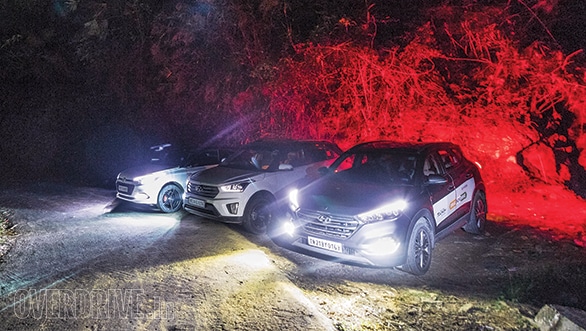 The Tucson strikes a pose with its stablemates, the Hyundai and Creta in Aizawl, Mizoram
The Tucson strikes a pose with its stablemates, the Hyundai and Creta in Aizawl, Mizoram
 The Tucson snakes past the Reiek Heritage Village in Mizoram
The Tucson snakes past the Reiek Heritage Village in Mizoram

On the way back to Aizawl that night, we drove past a few youths who were simply relaxing by the wayside, listening to pop music. They were in a Hyundai i20 and Creta, and we thought it would make for a good picture if we clicked our Tucson in the same frame. After speaking with them we got to know that they were part of the MIMSA (Mizoram Motorsports Association). Discussions about cars, bikes and racing, as you can imagine, went on well into the night.
We were told about the motorsport culture in Aizawl and their regular visits to an abandoned airstrip nearby to organise and participate in races. One of the guys was excited to see the new Tucson in person and also took a few selfies. Such enthusiasm around automobiles was surely a memorable part of our visit to Mizoram. The journey continues in the next issue of OVERDRIVE.
For more Hyundai travelogue stories from OVERDRIVE, click here
Photography: Ishaan Bhataiya & Rohansingh Suryawanshi
Starts Rs 27.69 Lakhs
1997cc
Automatic
156
416
12.95 Kmpl
Starts Rs 9.99 Lakhs
1353cc
Automatic
115
242
-NA-
Starts Rs 6.8 Lakhs
1493cc
Manual
83
241
-NA-







